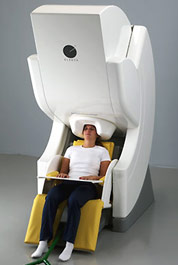

Scientific Lectures //
Multiscale Amplitude-Modulation Frequency-Modulation (AM-FM) Texture Analysis of Multiple Sclerosis
Constantinos S. Pattichis, Ph.D. - Professor, Department of Computer Science, University of Cyprus
Presented: January 20, 2015
ABSTRACT: This presentation introduces the use of multiscale amplitude modulation-frequency modulation (AM-FM) texture analysis of multiple sclerosis (MS) using magnetic resonance (MR) images from brain. Clinically, there is interest in identifying potential associations between lesion texture and disease progression, and in relating texture features with relevant clinical indexes, such as the expanded disability status scale (EDSS). This longitudinal study explores the application of 2-D AM-FM analysis of brain white matter MS lesions to quantify and monitor disease load. To this end, MS lesions and normal-appearing white matter (NAWM) from MS patients, as well as normal white matter (NWM) from healthy volunteers, were segmented on transverse T2-weighted images obtained from serial brain MR imaging (MRI) scans (0 and 6-12 months). The instantaneous amplitude (IA), the magnitude of the instantaneous frequency (IF), and the IF angle were extracted from each segmented region at different scales. The findings suggest that AM-FM characteristics succeed in differentiating 1) between NWM and lesions; 2) between NAWM and lesions; and 3) between NWM and NAWM. A support vector machine (SVM) classifier succeeded in differentiating between patients that, two years after the initial MRI scan, acquired an EDSS ≤ 2 from those with EDSS > 2 (correct classification rate = 86%). The best classification results were obtained from including the combination of the low-scale IA and IF magnitude with the medium-scale IA. The AM-FM features provide complementary information to classical texture analysis features like the gray-scale median, contrast, and coarseness. The findings of this study provide evidence that AM-FM features may have a potential role as surrogate markers of lesion load in MS.

